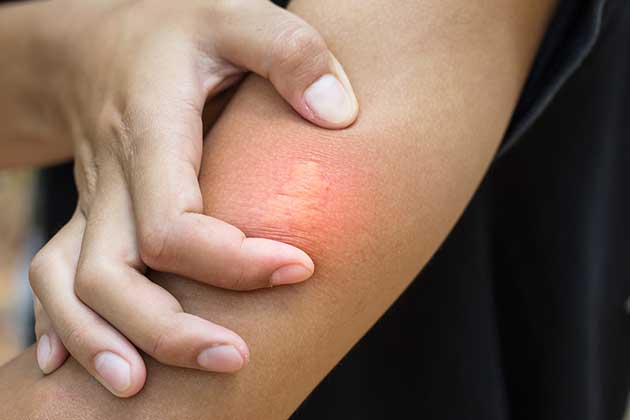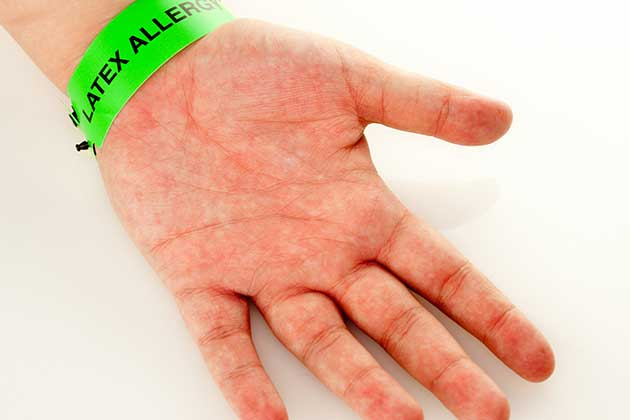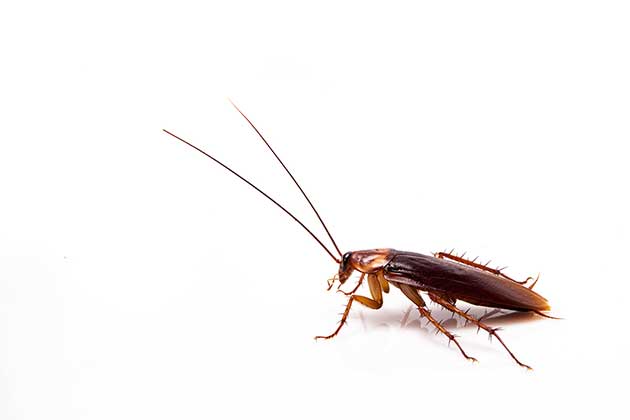Pollen

This is the most common allergen. Pollen is the fine powder that comes from fertilized plants, grasses, trees, and weeds. Because the powder is so fine, it can be carried long distances in large amounts by the wind. Pollen causes seasonal allergic rhinitis most of the time but also affects those with perennial allergies.
Food

Foods such as eggs, milk, peanuts, tree nuts, wheat, soy, sesame seeds, seafood, sulfites, and mustard contain ingredients cause some of the most dangerous allergic reactions. If a person is unaware of the allergy and they ingest that allergen, they could go into anaphylactic shock and that could mean a matter of life or death. Especially since the symptoms of food allergies often present as food intolerance.
Insect Bites

The insect bites you should watch out for come from bees, wasps, yellow jackets, hornets, and any kind of ant. People who are allergic to insect bites are also in danger of developing an anaphylactic reaction. Symptoms can be different from person to person but can include itching, hives, flushed skin, tingling or itching inside the mouth, and nausea or vomiting. Anaphylaxis would cause a drop in blood pressure and the airways to narrow, blocking breathing ability.
Latex

A latex allergic reaction can occur if the allergic person comes into contact with latex gloves, condoms, adhesive bandages, medical equipment, elastic, spandex, and/or party balloons to name a few items. The allergic reaction can present as hives, itching, runny or stuffy nose, as well as asthma-like symptoms of a tight chest, wheezing, and difficulty breathing. This allergy can also cause anaphylaxis.
Medications

The chances of developing an allergy to medication increase the longer or more frequently it is taken. It is more likely to develop that allergy if the medication is one that is rubbed on the skin or injected subcutaneously rather than taken by mouth. These symptoms most often present as skin rash, hives, or fever; however, a drug allergy can also cause an anaphylactic reaction.
Nickel and Other Metals

Nickel, copper, mercury, chromium, and cobalt are all frequent allergens. These metals are most often found in items such as jewelry, cell phones, and some clothing items. The allergic reaction causes local contact dermatitis which happens when the skin is rubbed directly against an allergen. The symptoms to the affected area can show up as a blistering or scaling of the skin, mild redness and swelling, and/or itching.
Dust Mites

Dust mites are going to be hard to avoid. They are tiny, microscopic insects that feed off dead human skin flakes among other things. They can live in bedding, carpets, mattresses, upholstery, curtains, and stuffed animals. Dust also contains the feces and decaying bodies of dust mites. The proteins present in dust are what causes the allergic reaction, which usually presents as hay fever.
Cockroaches

Much like dust mites, the protein in cockroaches’ droppings, saliva, and decaying body parts when kicked up in the air cause an allergic reaction. The reaction usually presents as hay fever symptoms and can be avoided in the future by ridding the home of these insects. If the infestation is not dealt with, the allergy can develop to be permanent instead of seasonal.
Mold

Mold is actually tiny fungi whose spores float through the air. It is usually found in dark, warm, damp places such as basements or bathrooms. The allergic reaction to mold is most frequently developed outdoors when mold spores are in the air. However, mold found in the home, school, or workplace can cause longer lasting symptoms if not removed as soon as possible.
Animal Dander

According to aaaai.org, more than 161 million of all household pets are cats and dogs. Also, contrary to popular belief, it is not the animal’s fur that causes the allergic reaction. The cause is actually the proteins found in their saliva, pet dander, skin flakes, and urine. Pet fur can also carry other allergens in it such as dust mites, mold spores, and pollen. Therefore, there is no breed of dog or cat that is completely hypoallergenic.
 Author
Chrissy Jones
Last Updated: December 14, 2023
Author
Chrissy Jones
Last Updated: December 14, 2023